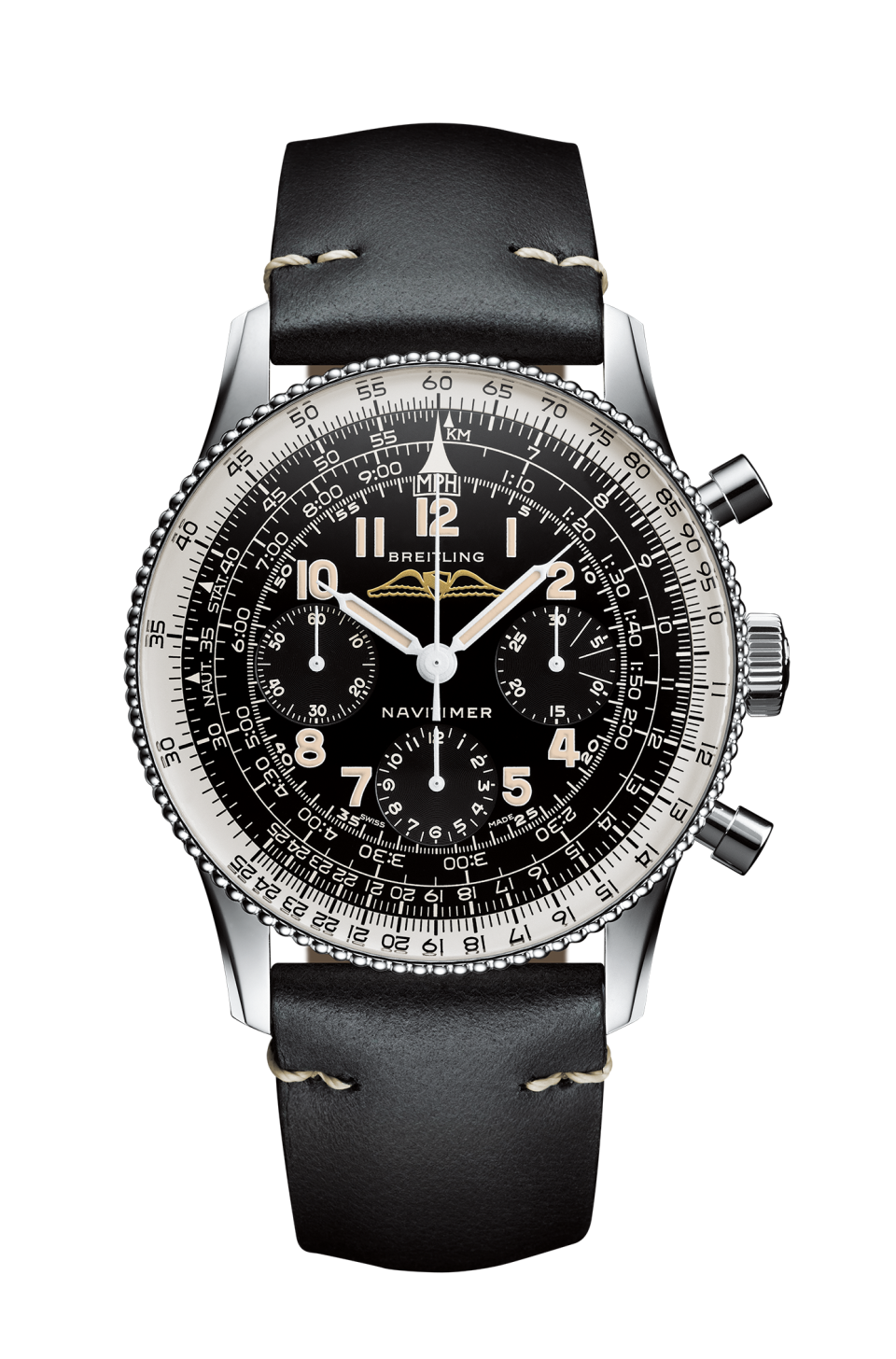The Breitling Navitimer Will Help You Fly a Plane
Prior to the introduction of flight computers, pilots relied solely upon analog instruments to ensure their safety. A smooth and successful flight depended upon the accuracy of dash-mounted altimeters and compasses, among other devices—including timepieces. This non-negotiable demand for precision gave life to the market for pilot’s watches, which Breitling has played a notable role in developing, primarily with the Navitimer. For nearly 70 years, it’s arguably represented the pinnacle of pilot’s timepieces, thanks to its ultra-legible display and uniquely practical bezel.
Though the Navitimer’s official launch came in 1952, its origins can be traced back one decade prior, to 1942. It was in this year that Breitling launched the Chronomat—a mathematics-friendly timepiece of sorts, differentiated by its slide-rule bezel. Fitting such a bezel to the perimeter of a chronograph (a timepiece equipped with a stopwatch) afforded the watch a ridiculous amount of functionality—and in the process attracted pilots, in addition to mathematicians and scientists.
Effectively, the slide rule made the Chronomat one of the very first wristwatches to incorporate a mechanical analog computer, which allowed its wearer to perform calculations including multiplication, division, and logarithms. In the cockpit, pilots used their slide-rule bezels to calculate more specific metrics, like air speed and fuel consumption rates. Today, you might not need to use the slide-rule bezel for much—but it makes a wonderfully convoluted and old-timey alternative to a tip-calculating app, if you’re into that sort of thing.

As the Chronomat’s popularity increased among pilots, Breitling decided to address this market directly, giving life to the Navitimer. In the beginning, Breitling produced the Navitimer exclusively for members of the Aircraft Owners and Pilots Association (AOPA), and proudly displayed the aviation organization’s logo on the dial in place of its own. This early, model-launching timepiece is known to die-hard aficionados as the Ref. 806, and, due to its oversized case and detail-packed dial, still looks decently modern to this day. As the decades continued to pass, Breitling wisely incorporated the original reference’s unmistakable design language into all subsequent Navitimer models. This cemented the chronograph’s place in watchmaking history as a truly iconic pilot’s watch.
With the popularity of vintage watches at an all-time high, and major watchmakers more than aware of this fact, many have decided to produce faithful “reissues” of their most celebrated references to get in on the action. Breitling is no exception: earlier this year, they rolled out a watch nearly identical to the original Navitimer, called the Ref. 806 1959 Re-Edition.
Just like the watch that started it all, this new offering features a sizable 41mm case that’s fitted with a vintage style plexiglass crystal. The most notable difference, however, is the mechanical movement powering the magic—Breitling’s all-new Caliber B09, which is manually wound. Between the presence of the winged shield logo of the AOPA, to that of the beaded style bezel and slide-rule, Breitling’s newest limited-edition Navitimer is full of modern bells and whistles—but doesn’t forget to honor its past.
Originally Appeared on GQ

